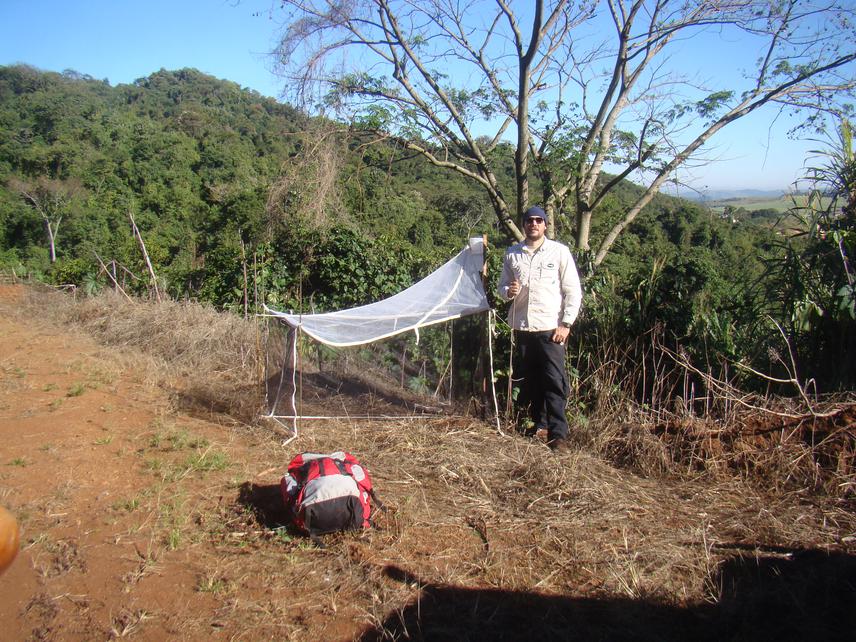Hugo Reis Medeiros
Highlight the importance of forest remnants on the maintenance of biodiversity and their ecosystem services with focus on pest control services in crops.

Malaise trap used to capture insects.
The aim of this project is to investigate the relative contribution of forest fragments on maintenance of predatory insects and their pest control services in agricultural landscapes of southeast Brazil. Here we will use coffee plantations, the coffee leaf miner Leucoptera coffeella (the most important coffee pest in Brazil) and the predatory wasps from Vespidae family (the main natural enemies of L. coffeella) to investigate if forest fragments are sources of natural enemies to adjacent crops.
The populations of pests and natural enemies will be monitored in 20 forest fragments and 20 adjacent coffee fields along a gradient of forest cover from crop dominated to forest dominated landscapes. This gradient of 20 landscapes will be located in northern São Paulo State and southern Minas Gerais State both in southeast Brazil.
The predominant vegetation in the region is the Seasonal Semideciduous Forest (SF), a type of Atlantic Forest that occurs mainly in south and southeast Brazil. The SF is considered one of the most threatened ecosystem types of the Atlantic Forest hotspot. Indeed, in 2009 only 7 % of its original cover still remains.
The field work will last 13 months from January 2016 to January 2017. Predatory wasps will be captured for seven consecutive days per month using the baited PET bottle trap that is made with a 2 L PET type bottles (Polyethylene Terephthalate Bottles), while L. coffeella will be monitored once a month during wasps samplings. In each site, pest population will be estimated in 20 randomly selected coffee plants (10 plants in the centre of the crop and 10 plants in the crop edges. We will use forest cover at landscape scale (up to 2 km radius), microclimate and crop management as explanatory variables. Furthermore, we also use landscape diversity, forest connectivity and edge density as landscape explanatory variables. Landscape metrics will be obtained from land use maps and crop management such as pesticide usage will be recorded by interviewing farmers monthly.
We expect to provide evidences that forest fragments are sources of beneficial insects which control pests in adjacent crops. Such information will aid conservationists to strengthen the importance of conserving Atlantic forest remnants for local stakeholders such as farmers.